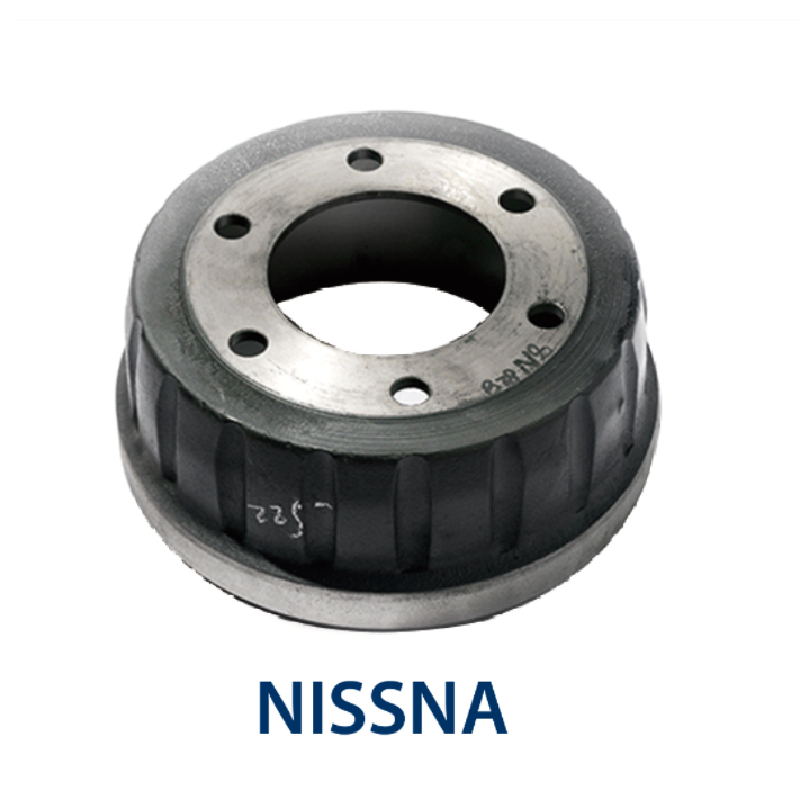Oct . 12, 2024 23:00 Back to list
Exploring the Impact of Brake Drum Diameter on Vehicle Performance and Safety
Understanding Brake Drum Diameter Importance and Implications
When it comes to vehicle safety and performance, the braking system is one of the most critical components. Among the various elements that make up this system, the brake drum plays a significant role, especially in drum brake systems. The diameter of the brake drum is a key specification that affects not only how effectively a vehicle can stop but also how it handles under different driving conditions. In this article, we will explore the significance of brake drum diameter, its implications on vehicle safety, and factors to consider when evaluating or replacing brake drums.
What is Brake Drum Diameter?
The brake drum diameter refers to the width of the circular component that houses the brake shoes in a drum brake system. When the brake pedal is pressed, brake shoes expand against the inner surface of the drum, creating friction that slows the vehicle down. The size of the drum is crucial; a larger diameter can provide more braking surface area, thus enhancing the overall stopping power of the brakes.
Importance of Brake Drum Diameter
1. Stopping Power A larger brake drum diameter generally allows for better heat dissipation and increased friction surface area, which translates to improved braking performance. This is particularly important in heavy vehicles that require more significant stopping power due to their weight.
2. Heat Management During braking, heat is generated due to friction. If the brake drum diameter is too small, it may lead to overheating, which can cause brake fade—a reduction in braking effectiveness. Larger drums can absorb and dissipate heat more effectively, helping maintain consistent braking performance.
3. Vehicle Specifications Each vehicle is designed with specific braking requirements that are influenced by factors such as weight, intended use, and speed capabilities. Ensuring that the brake drum diameter is within the manufacturer’s specifications is crucial for both safety and regulatory compliance.
4. Tire and Wheel Compatibility The diameter of the brake drum must also align with the size of the wheels and tires. A mismatch can lead to improper clearance and potential mechanical failures, including brake drag and uneven tire wear.
Signs of Brake Drum Problems
It is essential to monitor the condition of brake drums regularly. Over time, factors like wear, corrosion, or thermal stress can affect their integrity and performance. Here are some signs that you may need to inspect or replace your brake drums
brake drum diameter

- Vibration During Braking If you feel a vibration or pulsation when pressing the brake pedal, it could indicate that the brake drum is warped or has become unevenly worn. - Reduced Braking Performance A noticeable decrease in braking strength or responsiveness may signal underlying issues with the brake drum or associated components.
- Unusual Noises Grinding or scraping sounds during braking can suggest that the brake shoes are worn down or that debris is lodged between the drum and shoes.
- Visible Damage Inspecting the brake drums periodically for cracks, grooves, or deep scoring can help identify problems before they escalate.
Factors to Consider When Replacing Brake Drums
When it comes to replacing brake drums, several factors must be taken into account
1. Quality of Materials It is crucial to choose high-quality materials that can withstand the rigors of braking. OEM (Original Equipment Manufacturer) parts are often recommended to ensure compatibility and reliability.
2. Proper Sizing When replacing a brake drum, it is essential to confirm that the diameter aligns with the vehicle’s specifications, as using an incorrect size can lead to multiple complications.
3. Brake Shoe Compatibility Brake shoes must match the drum size and type. Incompatibility can affect braking efficiency and cause premature wear.
4. Installation Process Ensuring that professionals install the new brake drums can prevent mistakes that could compromise vehicle safety.
Conclusion
In conclusion, the brake drum diameter is a crucial aspect of a vehicle's braking system that directly impacts safety and performance. Understanding its significance helps vehicle owners maintain their braking systems effectively and promptly address any issues that arise. Regular inspection and adherence to manufacturer guidelines can ensure optimal braking performance, providing peace of mind while driving. Always consult with qualified professionals when dealing with brake system components to ensure safety on the road.
-
Scania Brake Drums: OEM Quality for Optimal Safety & Durability
NewsAug.16,2025
-
R.V.I: Advanced Remote Visual Inspection for Precision
NewsAug.15,2025
-
Discover HYUNDA: Innovative Vehicles, Equipment & Solutions
NewsAug.14,2025
-
R.V.I: Unlock Advanced Insights & Real-time Performance
NewsAug.13,2025
-
Kamaz Brake Drum: Durable & Reliable for Heavy Duty Trucks
NewsAug.12,2025
-
Heavy Duty Iveco Brake Drum - Premium Quality & Safety
NewsAug.11,2025
